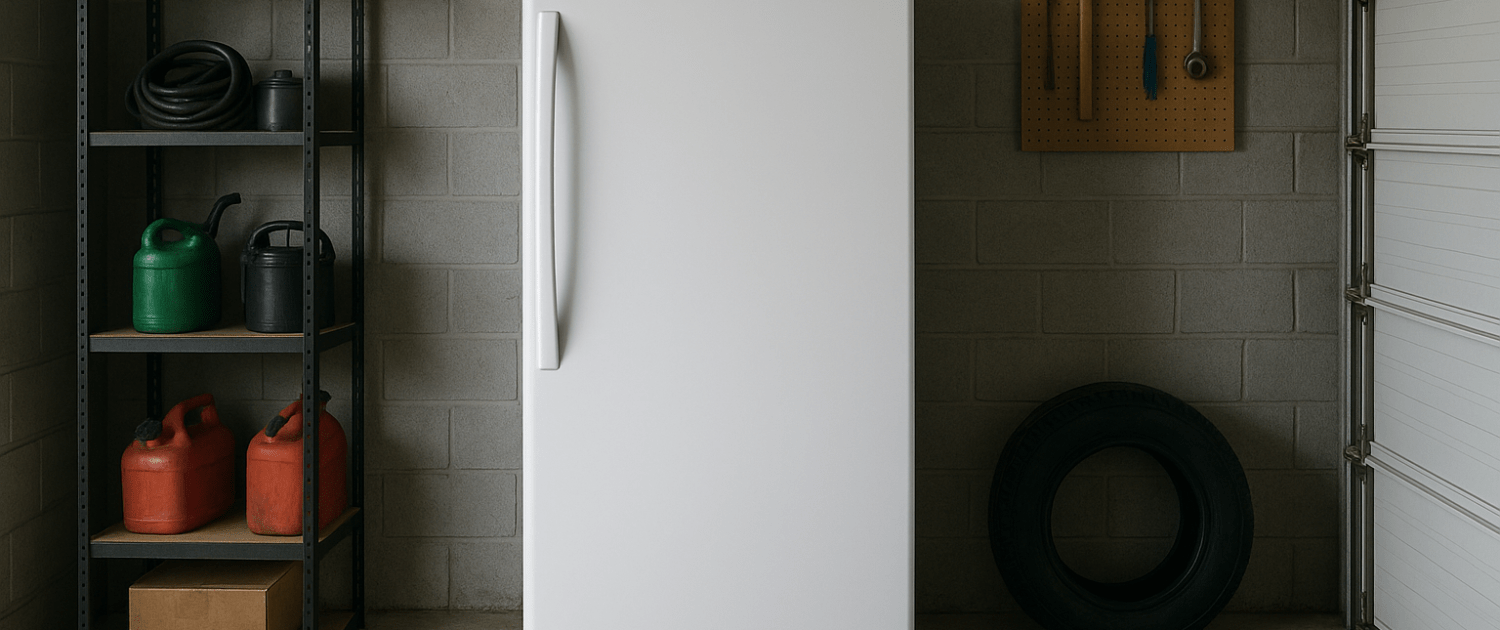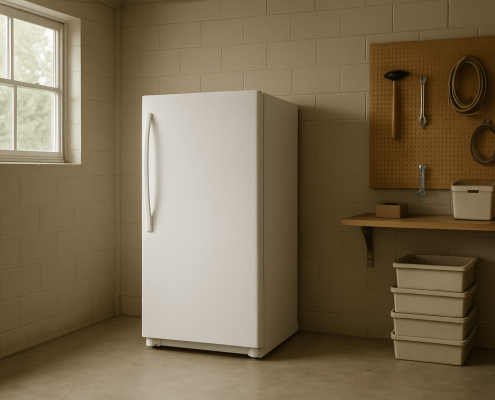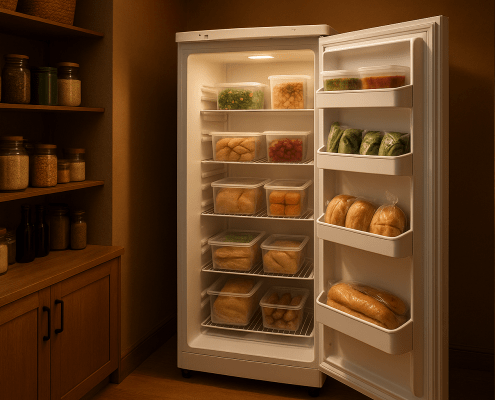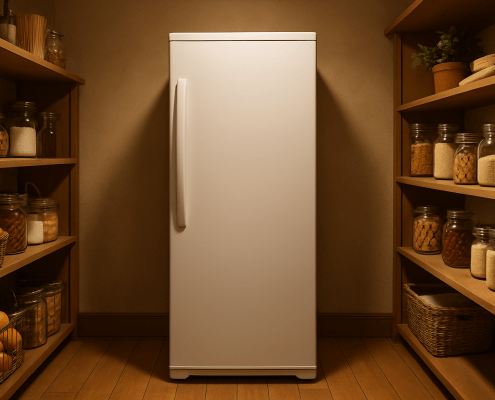Upright Freezer Indicator Light Not Working? Here’s How to Fix It
Steven E / Tuesday May 20, 2025
Having issues with your upright freezer’s indicator light? This helpful guide will walk you step-by-step through some troubleshooting tips to get your freezer’s light back up and running. A malfunctioning indicator light can often signal bigger problems with your appliance, so it’s important to address this promptly to avoid potential food spoilage or freezing issues. Read on for some practical freezer troubleshooting advice on determining the cause and fixing your unlit freezer indicator light.
The information in this article may not apply to your specific appliance model. We recommend consulting your manufacturer’s documentation or contact us with any questions.
Common Causes of a Faulty Freezer Indicator Light
The indicator light inside your freezer is an important diagnostic feature that alerts you to the current temperature and running status of your appliance. This internal light acts as a monitor, changing color or blinking patterns to signify if temperatures are too high, the freezer is actively running, if quick freeze mode is enabled, or if the power has been cut. When this indicator light stops illuminating, it typically means there is some type of electrical issue preventing it from turning on.
There are a few key components that could be the culprit:
- Burnt-out light bulb – The most straightforward reason your freezer’s indicator light won’t turn on is that the bulb has burned out. These small bulbs eventually stop working like any other light after continuous use.
- Faulty power supply – The indicator light relies on electricity to function. If there is some interruption in power delivery, the light may not come on even if the bulb is fine. Issues with a tripped breaker, damaged power cord, or faulty main control board can prevent the indicator light from powering on.
- Loose or damaged wiring – The indicator light connects to the main freezer wiring via internal cables. If these wires become loose or sustain damage from normal wear and tear, light function can be impacted.
- Malfunctioning main control board – The main PCB control board controls all electronic operations, including activating the indicator light. If this experiences any internal failures, it can lead to a non-working light.
Now that you know some of the most probable components that can cause problems with the freezer indicator light, let’s go over some troubleshooting basics.
Troubleshooting a Non-Working Freezer Indicator Light
When your freezer’s indicator light is out, there are a few initial troubleshooting steps you can take:
- Check power connections – Make sure the freezer is properly plugged in and your kitchen breaker or fuse is not tripped. Reset any tripped breakers to restore power.
- Inspect the bulb – Open the indicator light housing and remove the bulb to check for any darkening or broken filaments indicating burnout. Test or swap in a new bulb if faulty.
- Evaluate wiring condition – Visually inspect wires leading to the indicator light for damage, taking note of any fraying, splitting, loose connectors, or corrosion.
- Assess the control board – If power is connected and the light itself seems functional, the main control board may be malfunctioning.
- Check door seals and operation – Faulty door seals or improper door closures can impact freezer efficiency and light function.
These basic steps should reveal any initial causes for your freezer’s non-working indicator light. We’ll now go into more depth on specific troubleshooting processes.
Testing the Indicator Light Itself
The first troubleshooting step when your freezer’s indicator light won’t turn on is to test the light itself. You’ll want to evaluate these components:
- Light bulb – Disconnect power to the freezer and unscrew the indicator light bulb from its socket. Closely inspect the bulb for any darkened or broken glass or filament. Any visible damage means the bulb has expired and needs replacing.
- Wiring – With the bulb removed, check the indicator light wiring for damage. Look for cracking, loose plugs, burns, or corrosion. Damaged wires can disrupt power delivery to the bulb.
- Light socket – Make sure the socket itself is clean and free of debris or moisture. A faulty socket can affect bulb function.
- Power supply – Restore power to the freezer and use a multimeter to test for current at the light socket. No power could signify issues with supply or connections.
- Control board – If the bulb, wires, and power supply check out, problems with the main control board may prevent the indicator light from activating.
Evaluating Wire and Power Connection Issues
Since the indicator light relies on electricity to illuminate, one of the major causes of failure is disrupted power supply due to damaged wiring or loose connections. Here is how to evaluate these potential issues:
- Visual inspection – Closely examine all wiring leading to the indicator light housing from the main interior freezer wiring harness. Look for corrosion, burns, cracking, loose plugs, or fraying.
- Connectivity tests – Make sure the wiring plugs are fully inserted and any inline connectors are joined. Wiggle wires while the freezer is on to check for intermittent power.
- Continuity test – Use a multimeter to test for continuity in wires leading to the indicator light. This will detect any unseen internal breaks.
- Power verification – Use your multimeter to check for proper voltage at the light socket. Failure likely means issues back along the supply line.
- Connection repair – Replace any damaged wires or harness plugs. Solder or properly insulate any splices. Confirm no gaps in the power delivery path.
- Protective insulation – Wrap any wiring splices in electrical tape and consider conduit for exposed sections to prevent future damage.
Troubleshooting Power Supply Problems
For the indicator light to activate, power must be consistently delivered from your kitchen electrical supply to the light itself. Tripped breakers, damaged cords, or control board issues can all interrupt this power supply. Here is how to troubleshoot these potential problems:
- Breaker check – Use a multimeter and/or test indicator lights to verify power is active at the kitchen outlet supplying the freezer. Flip any tripped breakers fully off and then on again to reset.
- Power cord inspection – Unplug the freezer and thoroughly inspect the entire power cord for damage, paying close attention to the plug. Look for cracking, loose prongs, melting, distortion, or corrosion.
- Continuity check – Test cord continuity using a multimeter. This will detect any unseen internal wire damage. Wiggle the cord while testing to check for intermittent breaks.
- Outlet function – Plug the freezer into a separate outlet known to be working properly. If the issue persists, focus troubleshooting back on the appliance.
- Control board – If supply line components all verified functional, the main freezer control board may have failed at regulating indicator light power.
Examining the Control Board
The internal main PCB control board is the central electrical brain controlling all of your freezer’s functions. If this component fails, it can lead to a wide variety of operational issues, including a non-working indicator light. Here is how you can test the control board:
- Power testing – Use a multimeter to check if the control board is properly receiving 120V power from the supply line. Failure here indicates a disrupted electrical issue.
- Function testing – Determine if the control board is failing to activate the indicator light specifically or if the entire freezer is non-functional. This helps isolate the problem.
- Indicator light circuit – Check the indicator light pins on the board for any sign of burning, corrosion, or loose connections. This can break the lighting circuit.
- Component inspection – Visually inspect the board for any damaged capacitors or relays. Look for bulging, leaking, or popped parts that may need replacing.
- Continuity testing – Use your multimeter to test the continuity between board connectors and corresponding freezer parts. Look for opens in circuits.
- Board replacement – If testing confirms control board failure, use your model number to locate the correct part.
More information
Thanks for reading! If you have any other appliance repair needs or projects, you can find other resources and our DIY blog at AppliancePartsPros.com. There, you can enter your model number to order the exact parts you need. Most orders arrive in 2-3 business days.
We’re here to help! You can reach our award-winning customer service team at 1-877-477-7278, chat with a pro on our website, and watch thousands of free video tutorials on our YouTube channel.
With nearly a decade of experience in providing top-notch customer service regarding appliance parts and repair, Steven enjoys sharing practical advice, troubleshooting tips, and interesting information to help readers stay informed.





